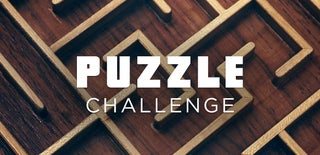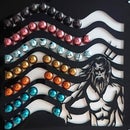Introduction: Hollow Square Contest
The Hollow square contest is a business game that makes teams reflect on the way they communicate with one another. I use it in the context of Agile transformation projects, but I've seen it used to identify people with leadership capabilities in interviews or in university courses as well. It takes between 30 minutes and 1 hour and can be played simultaneously by anywhere between 12 and a million people and really leaves an impact on participants, so I definitely recommend trying it; it requires almost no preparation and very little time.
That said it's also a fun standalone puzzle for kids, of course.
Warning: If you read on, you will never be able to play the game again, as this is the instructor's briefing.
The objective is simple: two teams, a planning team and an implementing team, work together to solve the puzzle as fast as possible. If there are more then 6-8 players, you can make it a contest by letting several pairs of teams race to solve the puzzle. Each team receives its own briefing; one team knows the solution from the start, they explain it to the other team, which then has to build it. This means that communication is key to winning, but the briefings are written in such a way that participating teams invariably misinterpret it and fail to actually communicate during the exercise - which is great for the retrospective that follows the game, of course!
The best communicators can lead their team to the solution in 2 minutes (how hard is it to build a puzzle if you have the answer sheet anyway?!). Solving the puzzle without instructions takes around 15 minutes. The average team takes around 20-30 minutes mostly to plan how they'll explain; showcasing a classic silo-company problem.
You can find the briefings and instruction sheets in detail here. The game can be played with a simple paper cutout, so if you're mainly interested in playing it with your own team, go ahead and do that. If you're a consultant or teacher that can reuse the pieces and likes fancier things, the next step includes the svg files to make a lasercut version in MDF.
Step 1: The Lasercut Version
To make sure the board was as large as possible but not too big to take along either, I divided the whole thing in 4 equal parts. They can then be connected with the small block in the middle, after you glue the 4 corner squares on it with some simple wood glue. A little extra spacing ensures they can be easily stuck together and taken back apart.
I removed the logo in the middle from the svg file, so you can easily paste in whatever image you like.
Make sure you paint the pieces; I find that for MDF this works very well with primer + normal spray paint. Painting is important, because otherwise participants can find matching patterns in the laser's burn marks. Alternatively you might use plexiglass, I reckon that'd look even cooler!
That's all, go for it!
Attachments

Participated in the
Puzzle Challenge












